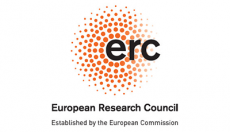Comments on The Crimmigrant Other
Posted
Time to read
Guest post by René van Swaaningen, Criminology Department, Erasmus University Rotterdam. This is the fourth post of Border Criminologies Book Discussion Week on The Crimmigrant Other: Migration and Penal Power.
With the disaster in Moria fresh in our minds, it is a truism to say that Katja Franko’s new book The Crimmigrant Other is a timely study. The book may deal with an ugly theme, but it is elegantly written, in the sense that it explains complex issues in a clear and accessible way. It is also a rich book, both with respect to the wide range of sources and unique empirical research, as well as regarding its thought-provoking character.
Franko’s focus on the ‘technicality’ of crimmigration, i.e. on the bureaucratic production of the crimmigrant other, rather than framing it in the currently popular national populist discourse, is also highly original and convincing. It is not only ‘cool’ in the sense of ‘not heated’ (p.195), but also in the sense of being a daring enterprise; it is daring exactly because the technicalities of crimmigration differ quite a bit from one country to another. The crimmigration literature is much rooted in a US legal context, so for a book with a European focus such as this you need a framework that allows for other forms in which crimmigration takes place. In that sense, a focus on the technicality of crimmigration is thus to some extent inevitable.

Let me give a couple of examples of this inevitability. In some European countries, migration law, which is mostly administrative law, has indeed merged with criminal law, but in other countries, such as e.g. Italy, they have remained separate fields. This sheds a different light on the different legal forms in which crimmigration takes place. Terms like ‘banishment’, ‘expulsion’, ‘extradition’ and ‘deportation’ mean different things in different legislations. These differences also determine why one country (e.g. Norway) is the ‘deportation leader’, and why judges in criminal cases in Italy hardly impose any deportation orders. A third example of how different regulations lead to different forms of crimmigration is how people can obtain the citizenship of a specific country. This is much easier in countries where the jus soli is applied (such as the Netherlands), than in countries which have a jus sanguinis (such as Germany). In other words: the devil is in the details, and this study also proves how difficult it is to provide ‘situated knowledge’ in a relatively concise book on such a complex issue.
But, since the theme of the book is in the heart of the current political debate, which is not exactly immigration-friendly, the ‘cool’ approach also avoids a number of problems: it does not have to take explicit positions on xenophobic sentiments like ‘foreigners taking our jobs’, an alleged erosion of the Welfare State by immigration, or opening the door for terrorists. These normative aspects of the debate do play a notable role in chapter 4, on the European Union and the moral economy of border control, but not as a moral outrage which sometimes dominates the crimmigration debate. This fourth chapter focuses instead on control and policing, notably by Frontex, and less about what Europe means as a political and social project. When the EU was established as a political union in 1992, with the Treaty of Maastricht, I was quite optimistic about the idea of a ‘Europe of the regions’, in which the problems in the Basque country, Catalonia, Flanders, Northern Ireland, and maybe even former Yugoslavia could be overcome by a supranational body like the EU. And now, nearly thirty years later, we have Brexit and other nationalist withdrawals from the European dream, the emergence of new illiberal autocracies which still remain a member of the EU without subscribing to its foundations, and a very reluctant attitude of particularly Northern European countries to help Southern member-states by distributing immigrants more fairly over the different European countries. This is the political context in which all the control and policing measures that are so excellently described are to be read, and I am not sure whether a bit more ‘moral outrage’ about the failure of the EU on the migration issue would not have been necessary after all.
Regarding the moral economy of border control, Franko mentions the linking of migration and crime and distinguishing ‘good and evil’ (p.156). Yet, it seems to me that also the ‘governance by fear’ forms an important element of this moral economy: notably the fear of importing new contagious diseases, the fear of ‘foreign fighters’ or terrorists entering with ‘proper’ refugees, and indeed the nativist idea that ‘all those Muslims’ will gradually replace the autochthonous population and culture. The Crimmigrant Other came out too early in order to include any observation about the Covid-19 pandemic, but this has given the anti-migration sentiments a new dimension, even though, ironically, the global spread of Covid-19 was mainly due to rich, Western globetrotters. Another important event of this year, the world-wide demonstrations of Black Lives Matter movements, have pointed us at the neo-colonial and racist undercurrent in Western countries. The debate on institutional racism is certainly dealt with in The Crimmigrant Other, but it would probably have been given a more prominent place if the book had been written today.
A last issue I like to point at is the fact that the whole idea of what a ‘border’ is and the actors that are supposed to protect these borders have changed fundamentally. It is not only a bordered penality we are seeing, but rather a wide spectrum of very different, mobile, sometimes also privatised and bureaucratic ‘frontiers’ that have been put up within countries, by which ‘legal’ and ‘illegal’ aliens are just as well categorised. Focusing on this changed nature of borders and thus of border-regimes is, however, a subject for a next book on crimmigration in Europe.
Katja Franko’s new book has made me think, it made me reflect upon our own research on migration and border control, and it gave me many new ideas for further research. What else can one wish?
Any comments about this post? Get in touch with us! Send us an email, or post a comment here or on Facebook. You can also tweet us.
__________
How to cite this blog post (Harvard style)
van Swaaningen, R. (2020). Comments on the Crimmigrant Other. Available at: https://www.law.ox.ac.uk/research-subject-groups/centre-criminology/centreborder-criminologies/blog/2020/09/comments [date]
Share
YOU MAY ALSO BE INTERESTED IN
With the support of









